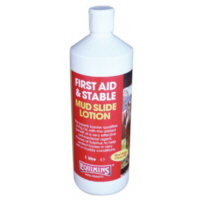What is mud fever?
At the time of the year, mud fever starts to become a worry for many people, and it’s easy to see why. Mud fever is more than just a bit of a sore area, or at least it can be if not treated quickly and efficiently using relevant products and correct  management. In this blog, we have a look at what mud fever is and what issues it can cause.
management. In this blog, we have a look at what mud fever is and what issues it can cause.
Mud fever, greasy heel, cracked heel, pastern dermatitis – whatever you call it, mud fever is an issue that many horses suffer with and many horse owners deal with each year. By understanding a little bit more about it and how it’s caused, you might find yourself in a better position to prevent your horse suffering this year.
Most mud fever is caused by bacteria in the mud. You might find that some horses in a shared field suffer and some don’t, and this is simply because the bacteria only really starts to cause an issue when the skin becomes compromised. This can happen due to a number of reasons – the horse could injure himself in the field – even a small cut is enough – or the skin could become weak and fragile due to the horse wadding around in water and mud during the winter. When this has happened, the bacteria can take hold and start to multiply as the conditions around a horse’s pasterns are pretty much perfect for this. This is the start of mud fever.
You might not notice the tiny cut or compromised area initially, especially if your horse has feathers or even unclipped hair in that area. When it becomes more established and the horse starts to show more classic symptoms, you will. Depending on the severity of the problem and how advanced it is, you may notice some/all of these:
- Leg stamping
- Matted hair around the lower leg
- Scabs
- Discharge around the scabs
- Sores on the skin
- Lameness
- Swelling and heat
- Hair loss on the infected areas
If your horse has become lame and his legs have become swollen and hot, he may need veterinary treatment to bring the issue under control. Next month, we’ll look at ways to help prevent mud fever and treat it.
To see our mud range, just visit the website here.

 Equimins specialises in producing natural horse supplies, products and supplements for the major areas associated with caring for a horse. All products are proudly made in the UK and excellent specification quality products are of paramount importance. Using this blog we want to share some of the knowledge we have gained through nearly 30 years of experience.
Equimins specialises in producing natural horse supplies, products and supplements for the major areas associated with caring for a horse. All products are proudly made in the UK and excellent specification quality products are of paramount importance. Using this blog we want to share some of the knowledge we have gained through nearly 30 years of experience. 


